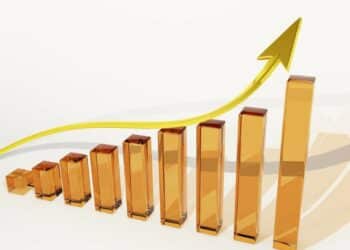Talking about ways for investors to benefit from the soaring price of food may strike some as tasteless, but no investor should feel squeamish about investing in agriculture because at the heart of the food crisis is a need to get more out of less, Fidelity Worldwide investment director Tom Stevenson has said.
“There are many ways to do this from fertilisers to irrigation, better farm equipment to biotechnology, and all require investment,” Stevenson said.
Colonial First State Global Asset Management portfolio manager Skye Macpherson said the current United States drought showed already tight global grain inventories were likely to tighten even more unless growing conditions improved in key agricultural areas around the world.
“This inventory situation is what has driven certain agricultural commodity prices to the high levels seen today,” Macpherson said.
Macpherson and Stevenson said global markets were not easy for individual investors to enter, however, because many of the most interesting opportunities were in emerging markets. Some of the dominant names in fertiliser production, for example, would not be familiar to many Australian investors, Stevenson said.
These included Uralkali, a Russian potash producer, Mosaic, a US producer of phosphate and potash, and Industries Qatar, which used the Gulf state’s abundant supplies of gas to manufacture ammonia and urea.
“Stock selection is also key because companies operating at different places along the supply chain are obviously affected in different ways by shifts in commodity prices,” Stevenson said.
Macpherson, who is also co-portfolio manager of CFSGAM’s soft commodity fund, said Australian investors’ access to the agricultural industry was limited on the Australian Securities Exchange.
“The main reason to invest in agricultural equities is to benefit from growing volumes in the industry. The industry needs to improve productivity in order to meet growing demand,” she said.
Different countries had different exposures to the food price spike, Stevenson said. India, where retail inflation was running at more than 10 per cent and where food accounted for half the price basket, looked vulnerable, as did Egypt – a significant importer of wheat.
“Feeding the world is a long-term challenge. Investing in the solutions to that problem rather than speculating on its symptoms by trying to second-guess commodity prices will make you more reliable returns over the long haul,” Stevenson said.
The reasons for food shortages were clear, he said.
“The global population is growing at around 70 million people a year, almost all of whom are in the developing world where agriculture is less efficient, land loss due to industrialisation and urbanisation most severe and changes in diet most damaging,” he said.
“The World Bank says demand for food must rise by 50 per cent by 2030, yet the land on which that massive increase in yield must be achieved has halved per head since 1950.
“If food shortages were simply a consequence of more people, they would be bad enough. But changes in what those people are eating are causing even greater problems.
“Growing wealth leads to greater consumption of meat and dairy products. This has two effects – it increases the land required for grazing cattle and it increases the need for grain and corn to feed the livestock. It takes seven kilogrmas of grain to produce one kilogram of meat, a massively inefficient way of feeding the world.”
Macpherson agreed more investment in agriculture was needed to improve productivity. The Food and Agriculture Organisation estimated around US$80 billion a year had to be invested to meet the forecast of a 50 per cent increase in food demand by 2030.
“This is positive for many companies, especially those involved in trying to improve yields, such as fertiliser and seed companies, as well as equipment manufacturers, which are helping to improve farm productivity,” Macpherson said.
She added that while the US drought had negative implications for US farmer revenues, growers in other parts of the world would benefit from the higher prices by increasing their planted acreage this year. Brazil was already shaping up for a big crop and farm inputs, such as fertilisers and crop protection, were shipping into South America ahead of the upcoming planting season.







